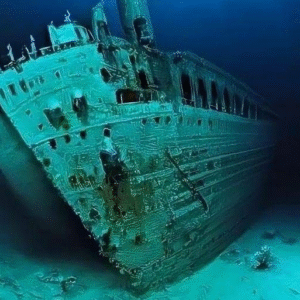Groundbreaking 3D Images of the Titanic Wreck Reveal Never-Before-Seen Details
In a historic achievement for deep-sea exploration, researchers have released the first-ever full-scale, high-resolution 3D scans of the RMS Titanic wreck, offering an unprecedented look at the sunken vessel as it lies on the ocean floor. Captured using cutting-edge technology, these images allow scientists and the public alike to view the Titanic in a way never before possible—as if the water had been drained away.
The scans were produced by Magellan Ltd, a deep-sea mapping company, in collaboration with Atlantic Productions, known for their documentaries on the Titanic and other significant historical subjects. The project involved over 200 hours of underwater scanning, using submersibles that hovered around the wreck—carefully avoiding contact—to record more than 700,000 high-resolution images. These were then stitched together into a full 3D digital model, accurate to the millimeter.
Unlike traditional photos or videos, which are limited by visibility, lighting, and the distortion of water, these scans allow experts to examine the Titanic in incredible detail and clarity. Every feature of the ship—from its rust-covered bow and torn stern to the scattered debris field—can be rotated, zoomed in on, and studied from any angle.
Among the most striking details visible in the new images:
- The famous bow section, recognizable from underwater footage and films, now appears in lifelike scale and condition.
- Personal items such as shoes, hats, and luggage can be seen lying on the seabed.
- The exact break point where the ship split in two is more clearly visible than ever before.
- Previously obscured features, such as intricate railings, machinery, and interior architecture, are now fully mapped.
These images represent more than a visual marvel—they’re also a scientific and archaeological triumph. Experts believe the 3D model will provide new insights into the ship’s deterioration, the exact mechanics of its sinking, and its long-term preservation. It also opens the door to virtual tours, educational experiences, and digital reconstructions for future generations.
“This is a complete game-changer,” said Titanic historian Parks Stephenson. “For the first time, we can truly see the Titanic as she is—not just a wreck, but a time capsule frozen in time. This changes how we tell her story.”
The wreck of the Titanic, located about 12,500 feet (roughly 3,800 meters) below the surface of the North Atlantic, has fascinated scientists and the public since its discovery in 1985. However, its inaccessibility and fragile condition have limited how much could be observed or studied—until now.
The release of the 3D model marks a major milestone in the field of marine archaeology and memorializes the ship and its more than 1,500 victims in a powerful new way. It stands as both a tribute and a tool—allowing humanity to better understand one of the greatest maritime tragedies in history.


